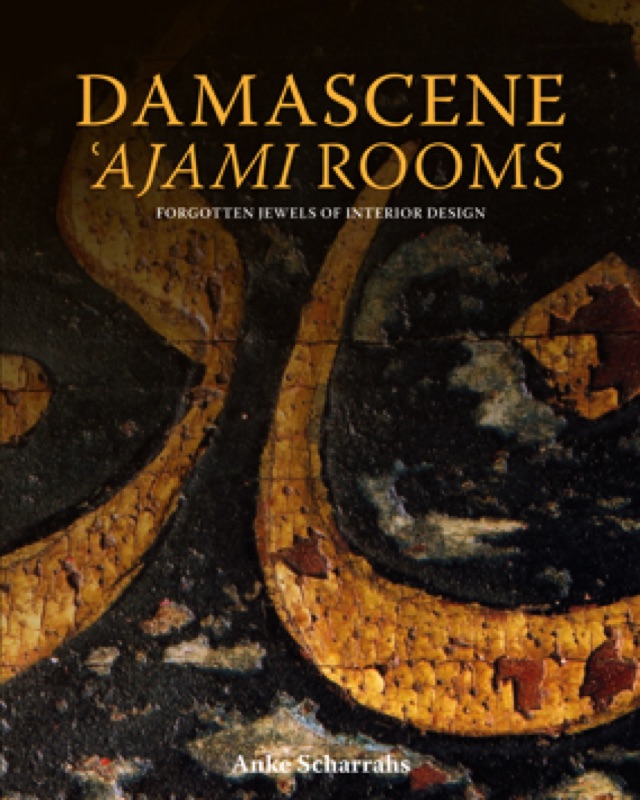Formalia
Foreword
Preface
Acknowledgements
I Introduction to the domestic architecture of Damascus
II Materials and techniques used for the decoration of Damascene residences
1 Stone and plaster decorations
1.1 Opus sectile: stone mosaic
1.2 Stone reliefs: partially painted and gilded
1.3 Marble slabs with raised Ê¿ajami decor
1.4 Ablaq banding
1.5 Ablaq paste-work
1.6 Upper wall zone
1.7 Landscape paintings
2 Wooden elements: doors, window shutters, wall panelling and ceilings
3 Glass gypsum windows
4 Mirrors
5 Tiles
6 Textiles
7 Damascene interior decorations: a harmonious concert of surface textures, gloss, colours and light
III Ê¿ajami wall panels and ceilings: a general typology
1 Interiors with wooden cabinet doors, niche frames and window shutters placed in an undecorated or ablaq stone wall
2 Interiors with overall wooden wall panelling
2.1 Rooms consisting of a plain framework with richly decorated Ê¿ajami panels
2.2 Rooms with entire panelling adorned with Ê¿ajamidecoration
3 Wooden ceilings
3.1 Visible beam ceilings: beam and coffer type
3.2 Visible beam ceilings: shisha type
3.3 Covered beam ceilings with centre panel and concentric frames
3.4 Covered beam ceilings with flat boards
3.5 Ceilings with three-dimensional openwork carvings and mirrors
3.6 Ceiling divisions: arch or beam construction
3.7 Additional ceiling elements: squinches and centre decorations
IV Other architectural and decorative elements of Ê¿ajami interiors
1 Entrance doors
2 Window shutters, soffits and grilles
3 Niches and wall cabinets
4 Cornices and cornice boards
V Ornaments, paintings and inscriptions
1 Iconography of the painted decoration
2 Inscriptions
VI History of Ê¿ajami decoration in Syria
1 Damascus
2 Aleppo
3 Further research
VII Historic materials and painting techniques used for Ê¿ajami decoration
1 Wood types and construction
2 Reused building material
3 Preparation of the wood for the painted decoration
4 Ground layers
5 Underdrawing and underwriting
6 Application of raised Ê¿ajami ornaments (pastiglia)
7 Metal leaf and foil application
8 Punchwork
9 Coloured glazes on metal leaf or foil
10 Paintings
11 Outlines
12 Textural contrasts in Ê¿ajami rooms
VIII Ê¿ajami workshops in the past and today
IX Surface appearance of Ê¿ajami decoration today: aging phenomena and colour changes
1 Disruptions or damages occurring during the drying process of the paint layers
2 Fading and discoloration of paint layers
3 Surface changes due to metal corrosion
4 Colour and surface changes caused by later applied varnish layers
4.1 Darkening of blue smalt paint layers
4.2 Darkening of the overall colour scheme
4.3 ‘Islands’ of dissolved glaze and varnish
4.4 Cracking and flaking in paint layers
5 Changes resulting from previous cleaning
X Bringing the old beauty back to life: an approach to the conservation and restoration of historic Ê¿ajami rooms
1 Conservation approach
2 Treatment of cracking and flaking surface decoration
3 Cleaning
4 Removal of later applied paint layers
XI Catalogue of Damascene Ê¿ajami interiors
1 Damascene Ê¿ajami interiors with original preserved surfaces
XII Catalogue of Ê¿ajami rooms preserved in collections worldwide
1Ê¿ajami rooms in Europe
Damascus Room, Victoria and Albert Museum, London
Damascus Room, Museum of Applied Art, Budapest
Damascus Room, Museum of Applied Art, Düsseldorf
Pierre Loti House, Rochefort
Damascus Room, Ethnological Museum, Dresden
Oriental Lounge, Bojnice Castle, National Museum, Slovakia
Arabicum, Villa Gutmann, Potsdam
Aleppo Room, Museum of Islamic Art, Berlin
2 Ê¿ajami rooms in America
Chicago World’s Fair, 1893
Brooklyn Museum, New York
Damascus Room, Cincinnati Arts Museum
Damascus Room, The Metropolitan Museum of Art, New York
Damascene ablaq-Ê¿ajami interior, attributed to the ‘Quwatli house’
Hagop Kevorkian Center for Near Eastern Studies, New York University
Syria-Lebanon Room, Cathedral of Learning, University of Pittsburgh
Damascus Room and Syrian Room, Shangri La, Doris Duke Foundation for Islamic Art, Honolulu, Hawai'i
3 Ê¿ajami rooms in Asia and Africa
Robert Mouawad Private Museum, Beirut
Gayer-Anderson Museum, Cairo
Ottoman Room, Islamic Arts Museum Malaysia, Kuala Lumpur
Tareq Rajab Museum, Kuwait
Appendix
Glossary
Bibliography
Index
